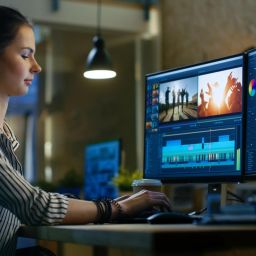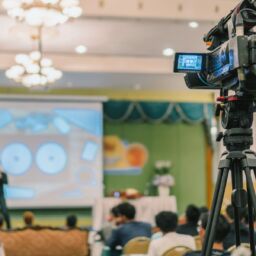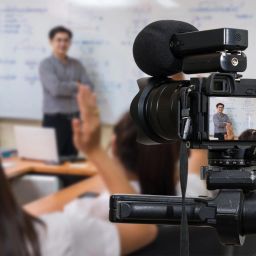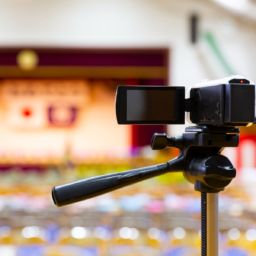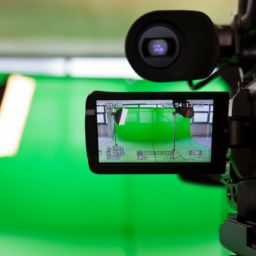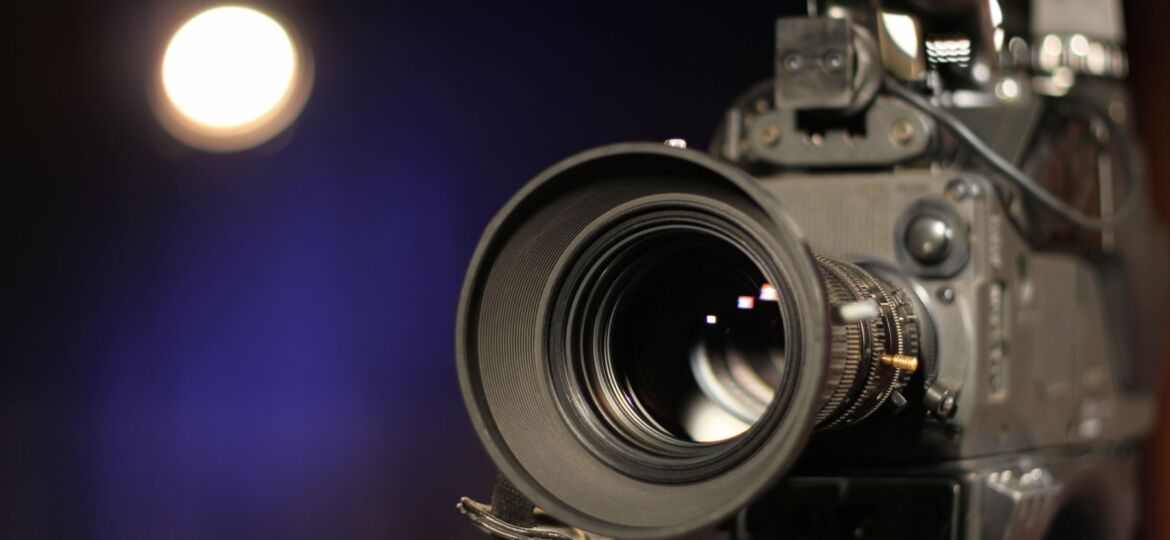
B-Roll can be a powerful tool in your arsenal of marketing materials, but how exactly do you master the art of B-Roll? To sum it up, the fundamental rule of video is to “show, don’t tell,” and that could not be more true for the purpose of B-Roll.
What is B-Roll?
First, it’s important to understand what B-Roll actually is. We’ve previously covered this topic in our FAQ Series, but for those who haven’t seen our helpful video, we’ll touch on some of the basics. If you consider your 1:1 interviews or primary driving portions of a narrative as your A-Roll, everything that is placed over that footage is considered your B-Roll. This is not necessarily “behind the scenes” footage or bloopers but acts more as filler content to feature in between different A-Roll shots.
For instance, in a video that features student’s stories on how their teachers have impacted their education, you’ll gather great lengths of content that tells the story. Even though the interviews can provide great insight into the student’s perspective, the clips don’t visually show the audience anything. This is where B-Roll comes in. When editing a video, you can add short clips that are relevant to what the A-Roll is referencing. For example, if a student is explaining how their teacher has helped them succeed, you can include a candid clip of the student in class with the teacher. Essentially, these clips should leave minimal room for imagination because the goal is to show the audience more about that featured topic or subject.
Now that we understand how B-Roll works let’s get into the nitty-gritty of it! We’re discussing the dos and don’ts of filming B-Roll.
Don’t Rush Filming B-Roll
It’s important to allocate time in the day for this essential facet of the production process. The time it takes to acquire a good B-Roll can take longer than you think. While it’s great to move quickly to get some good shots, the more options and locations and genuine action shots you have, the more likely you are to have meaningful content.
Here are some best practices to keep in mind when planning a shoot:
- Allow ample time for filming B-Roll relevant to your video.
- The longer your video is, the more B-Roll you’ll want to shoot.
- Be aware of potential complications. For instance, some students may need release forms, or there may be construction that could make facilities look unappealing, etc.
- Some types of B-Roll may take a long time to film alone, like drone footage and aerial shots.
- More B-Roll is always better! Always plan as much time as your schedule allows.
Check out this video of Sheridan High School’s 100th Homecoming Celebration, driven entirely by B-Roll.
Don’t Compromise on the Quality of B-Roll
B-roll can work wonders at hiding sharp cuts and mistakes, but you can’t solely rely on it to fix a greater issue at hand. Remember, every shot you cut into your video should enhance the viewer’s experience, not distract them. If the B-Roll footage appears to be too much of a filler, it will be obvious to the viewer and may distract from the overall message.
Don’t Steal B-Roll
The internet can be tempting at times, especially because it only takes a push of a button to find what you’re looking for—but using other’s footage isn’t always ethical. The bottom line is that you must always have permission from the original creator to use their content, or you can purchase the rights to the content if that option is available. Overall, it’s best to film your own original content because it makes your work more personal and genuine.
Do Plan to Capture B-Roll at Opportune Times
When planning your day of filming, make sure you allow time to capture B-Roll moments at opportune times. Whether it is captured candidly or staged, it plays a vital role in the overall impact of the video. Truly, B-Roll should be thought of as just as important as the interview portion of the video.
Do Use B-Roll to Blend Edits Seamlessly
If you have enough B-Roll footage to cover the speaker entirely—which is relevant to the topic being discussed—then you can take multiple clips, perhaps minutes or even days apart, cut them together, and the audience would never know when once you cut back to the speaker, it’s a different take. This happens more than anyone might ever know in the world of video production. When editing, subtly is key. If nobody notices these sneaky edits, then you know you’ve done an editing job well done!
Do Shoot for Longer than You Need, and in Sequences
As a general rule of thumb, you’ll want to shoot each B-roll clip for a minimum of 20 seconds. This may feel excessive, but it will allow you to find the best clip possible (no shakiness, crispy quality, etc.). Plus, the longer you film, the more material you have to work with.
This Mill Creek grant-based project required B-Roll during the event to showcase staff and community members collaborating.
For each B-roll subject, it’s a good idea to start shooting with these four basic shots:
- Wide
- Medium
- Close-up
- Super close-up
The magic of B-Roll is all in the vision. When used with intention, B-Roll has the power to boost the narrative, aesthetic, and overall landing of your video. Interested in collaborating with the seasoned experts at Media Services on your next project? Reach out to us today!



